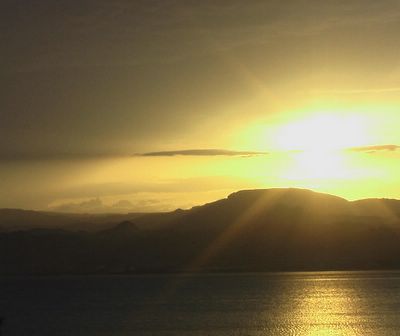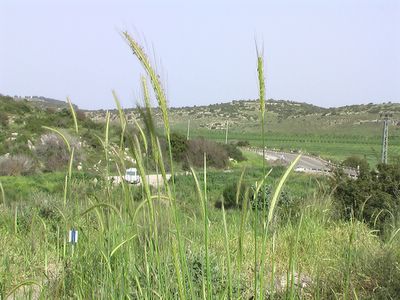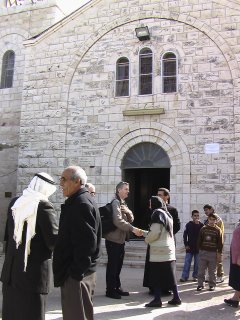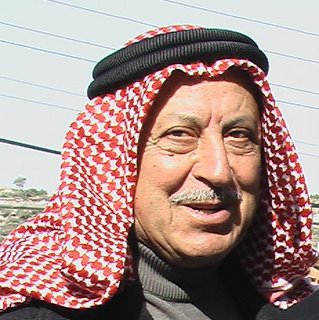By Jimmy CarterFor more than a quarter century, Israeli policy has been in conflict with that of the United States and the international community. Israel's occupation of Palestine has obstructed a comprehensive peace agreement in the Holy Land, regardless of whether Palestinians had no formalized government, one headed by Yasser Arafat or Mahmoud Abbas, or with Abbas as president and Hamas controlling the parliament and cabinet.
The unwavering U.S. position since Dwight Eisenhower's administration has been that Israel's borders coincide with those established in 1949, and since 1967, the universally adopted UN Resolution 242 has mandated Israel's withdrawal from the occupied territories. This policy was reconfirmed even by Israel in 1978 and 1993, and emphasized by all American presidents, including George W. Bush. As part of the Quartet, including Russia, the UN and the European Union, he has endorsed a "road map" for peace. But Israel has officially rejected its basic premises with patently unacceptable caveats and prerequisites.
With Israel's approval, The Carter Center has monitored all three Palestinian elections. Supervised by a blue-ribbon commission of college presidents and distinguished jurists, they have all been honest, fair and peaceful, with the results accepted by winners and losers.
Hamas will control the cabinet and prime minister's office, but Mahmoud Abbas retains all authority and power exercised by Yasser Arafat. He still heads the PLO, the only Palestinian entity recognized by Israel, and could deal with Israeli leaders under this umbrella, independent of Hamas control. He has unequivocally endorsed the Quartet's road map. Post-election polls show that 80 percent of Palestinians still want a peace agreement with Israel and nearly 70 percent support Abbas as president.
Israel has announced a policy of isolating and destabilizing the new government (perhaps joined by the United States). The elected officials will be denied travel permits and workers from isolated Gaza barred from entering Israel, and every effort is being made to block funds to Palestinians. The Quartet's special envoy, James Wolfensohn, has proposed that donors assist the Palestinian people without violating anti-terrorism laws that prohibit funds from being sent directly to Hamas.
In the short run, the best approach is to follow Wolfensohn's advice, give the dust a chance to settle in Palestine and await the outcome of Israel's election later this month. Hamas wishes now to consolidate its political gains, maintain domestic order and stability, and refrain from any contacts with Israel. It will be a tragedy - especially for the Palestinians - if they promote or condone terrorism.
The preeminent obstacle to peace is Israel's colonization of Palestine. There were just a few hundred settlers in the West Bank and Gaza when I became president, but the Likud government expanded settlement activity after I left office. President Ronald Reagan condemned this policy, and reaffirmed that Resolution 242 remained "the foundation stone of America's Middle East peace effort." President George H.W. Bush even threatened to reduce American aid to Israel.
Although President Bill Clinton made strong efforts to promote peace, a massive increase of settlers occurred during his administration, to 225,000, mostly while Ehud Barak was prime minister. Their best official offer to the Palestinians was to withdraw 20 percent of them, leaving 180,000 in 209 settlements, covering about 5 percent of the occupied land.
The 5 percent figure is grossly misleading, with surrounding areas taken or earmarked for expansion, roadways joining settlements with each other and to Jerusalem, and wide arterial swaths providing water, sewage, electricity and communications. This intricate honeycomb divides the entire West Bank into multiple fragments, often uninhabitable or even unreachable. Recently, Israeli leaders have decided on unilateral actions without involving either the United States or the Palestinians, with withdrawal from Gaza as the first step. As presently circumscribed and isolated, without access to the air, sea or the West Bank, Gaza is a nonviable economic and political entity.
The future of the West Bank is equally dismal. Especially troublesome is Israel's construction of huge concrete dividing walls in populated areas and high fences in rural areas - located entirely on Palestinian territory and often with deep intrusions to encompass more land and settlements. The wall is designed to surround a truncated Palestine completely, and a network of exclusive highways will cut across what is left of Palestine to connect Israel with the Jordan River Valley.
This will never be acceptable either to Palestinians or to the international community, and will inevitably precipitate increased tension and violence within Palestine, and stronger resentment and animosity from the Arab world against America, which will be held accountable for the plight of the Palestinians.
Acting Prime Minister Ehud Olmert and others pointed out years ago that Israel's permanent occupation will be increasingly difficult as the relative number of Jewish citizens decreases demographically both within Israel and in Palestine. This is obvious to most Israelis, who also view this dominant role as a distortion of their ancient moral and religious values. Over the years, opinion polls have consistently shown that about 60 percent of Israelis favor withdrawing from the West Bank in exchange for permanent peace. Similarly, an overwhelming number of both Israelis and Palestinians want a durable two-state solution.
Casualties have increased during the past few years as the occupying forces imposed tighter controls. From September 2000 until March 2006, 3,982 Palestinians and 1,084 Israelis were killed in the conflict, and this includes many children: 708 Palestinians and 123 Israelis.
There is little doubt that accommodation with the Palestinians can bring full Arab recognition of Israel and its right to live in peace. Any rejectionist policies of Hamas or any terrorist group will be overcome by an overall Arab commitment to restrain further violence and to promote the well-being of the Palestinian people.
Down through the years, I have seen despair and frustration evolve into optimism and progress and, even now, we need not give up hope for permanent peace for Israelis and freedom and justice for Palestinians if three basic premises are honored:
1. Israel's right to exist - and to live in peace - must be recognized and accepted by Palestinians and all other neighbors;
2. The killing of innocent people by suicide bombs or other acts of violence cannot be condoned; and
3. Palestinians must live in peace and dignity, and permanent Israeli settlements on their land are a major obstacle to this goal.
Former U.S. president Jimmy Carter led The Carter Center/National Democratic Institute observation of the Palestinian elections in January.
(Copyright by Project Syndicate and The Council on Foreign Relations, 2006)



































